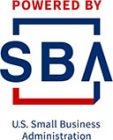 Hiring employees for your small business can be an exciting, but overwhelming, endeavor. It signifies your business is growing, but it’s no time to rest. Connecting with the right employees, and putting your best foot forward as an employer, take times and care. Get off on the right foot with these eight tips for the hiring process.
Hiring employees for your small business can be an exciting, but overwhelming, endeavor. It signifies your business is growing, but it’s no time to rest. Connecting with the right employees, and putting your best foot forward as an employer, take times and care. Get off on the right foot with these eight tips for the hiring process.
1. Pick the right time
There are two good times to add employees to your small business. One, when you need to diversify and add specialty knowledge. And two, when business is booming and you need to add customer service personnel to ensure your clients have a great experience doing business with you, says RISBDC business counselor and Director of Diverse Business Outreach Manuel Battle. Specialized roles might include bookkeeping, web development, operations, or marketing. Failing to add customer service personnel when needed puts you at risk of losing dissatisfied customers.
2. Know what you need, and know what you have to offer
Once you’ve assessed your company’s needs, develop an honest and comprehensive job description. It should clearly state expectations both for the immediate work and skills needed and be written with some flexibility to carry out additional tasks (often required at a small company). Hours, location, travel required, flexible work arrangements, compensation, and class of employee (contractor, employee, etc) should also be included.
Along with developing the job description, you should also prepare to speak honestly and succinctly about yourself (as a boss) and your company. Rhode Island-based HR consultant Cynthia Butler suggests you develop your company “elevator speech” — the sales pitch for why an employee would want to work for you. Sell your flexible workplace, the experience and growth available, the team environment, or any special perks you offer, but don’t oversell or misrepresent yourself. Be as honest as possible about what kind of boss you will be (involved, hands-off, etc). Losing a quality employee who had different expectations is far more costly than finding someone who is looking for what you can offer in the first place.
3. The right fit is important
While you’re being honest about your job needs, think about personality. What kind of person is going to be the right fit for your company? Beyond a skill set, a good degree, or even previous job success, you’re looking for employees who complete your particular puzzle. Motivation style, communication style, and personality are all important when considering who will be able to do the job well and who is likely to stay in the job.
4. Prepare for the interview
Preparing to interview job candidates has two major components. First, make sure that you’re well-versed in what questions you are (and are not) allowed to ask. HR consultant Butler emphasizes that a little legal training can keep you out of a lot of trouble. A good rule of thumb is to keep your questions focused on job requirements and expectations (rather than personal qualities of the applicant). For good measure, read up on additional tips for keeping an interview legal well in advance.
Second, prepare quality job interview questions designed to seek out information about knowledge, skill, and fit. Along with standard questions about previous successes, technical background, and how candidates would handle various situations, RISBDC counselor Battle recommends asking leading, open-ended questions about what they know about your industry or business. This gives you a chance to see if they acknowledge their own limits “or start BS-ing.” While it can be easy to “go with the flow” in an interview, Butler recommends ensuring you ask the same questions of each candidate in order to compare responses.
5. Cast your net smart, not necessarily wide
Networking continues to be one of the most popular ways small business owners find their employees. Let your friends, colleagues, business associates, and even your clients know about the position you want to fill. This also increases the quality of potential employees, as most people you know wouldn’t recommend someone to you that they wouldn’t be willing to vouch for. Additional job posting options include:
- Professional and trade organizations related to the job description
- Chambers of commerce
- Your website
- Industry-specific job boards
You can also post to a free large-scale job board, such as Indeed.com.
6. Use the buddy system
It’s always helpful to have a fresh take on the candidates, besides your own. Bring a team member or trusted advisor, who may react or respond differently to potential employees, to the interview with you. This will help you to paint a more well-rounded picture of each candidate when making hiring decisions.
7. Look for red flags
Throughout the hiring process and interview, make note of concerns that arise. Potential red flags include:
- Poor communication during interview process
- Unprofessional behavior: improper attire, being late without calling, typos or errors in resume and cover letter
- Lack of preparation: not knowing much about your company or having relevant questions ready
- Inability to answer common interview questions or provide examples of how they provided value to a former employer
- Summarized experience on a resume that doesn’t specify details such as company name and dates of employment
A candidate who displays lack of good communication or professionalism throughout any portion of the hiring process is likely to exhibit the same behaviors as an employee.
8. Dig deeper – carefully
Of course you’ll check references as you narrow down your search, but most people will only submit references that will speak positively for them (a negative, or even lukewarm, candidate reference would also be a red flag). So dig deeper. Thorough background checks are often not legally required. If you choose to perform a check on one applicant, you must also do it for all other candidates for that position. Selectively choosing applicants for additional screening is discrimination. Also, while checking up on a candidate’s social media accounts can be informative, be aware of the risks and boundaries before you go snooping. You can, however, talk to contacts within the industry, your network, and your own and the applicant’s community. Prior bosses are fair game too, though it is poor form to contact an applicant’s current boss without their explicit permission.
Hiring the right candidate for the job takes time and energy. As the financial costs of hiring and training an employee are considerable, finding the right one on the first try is worth the effort.
Looking for guidance and support for your planned business expansion? Schedule a free appointment with one of the RISBDC’s professional business counselors today!



